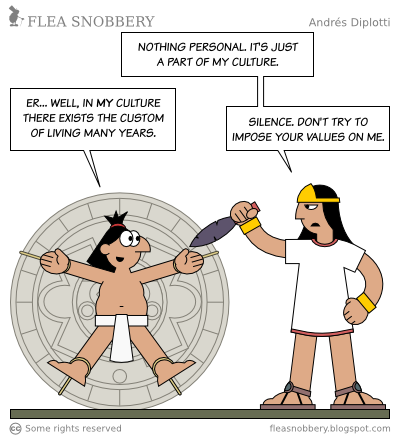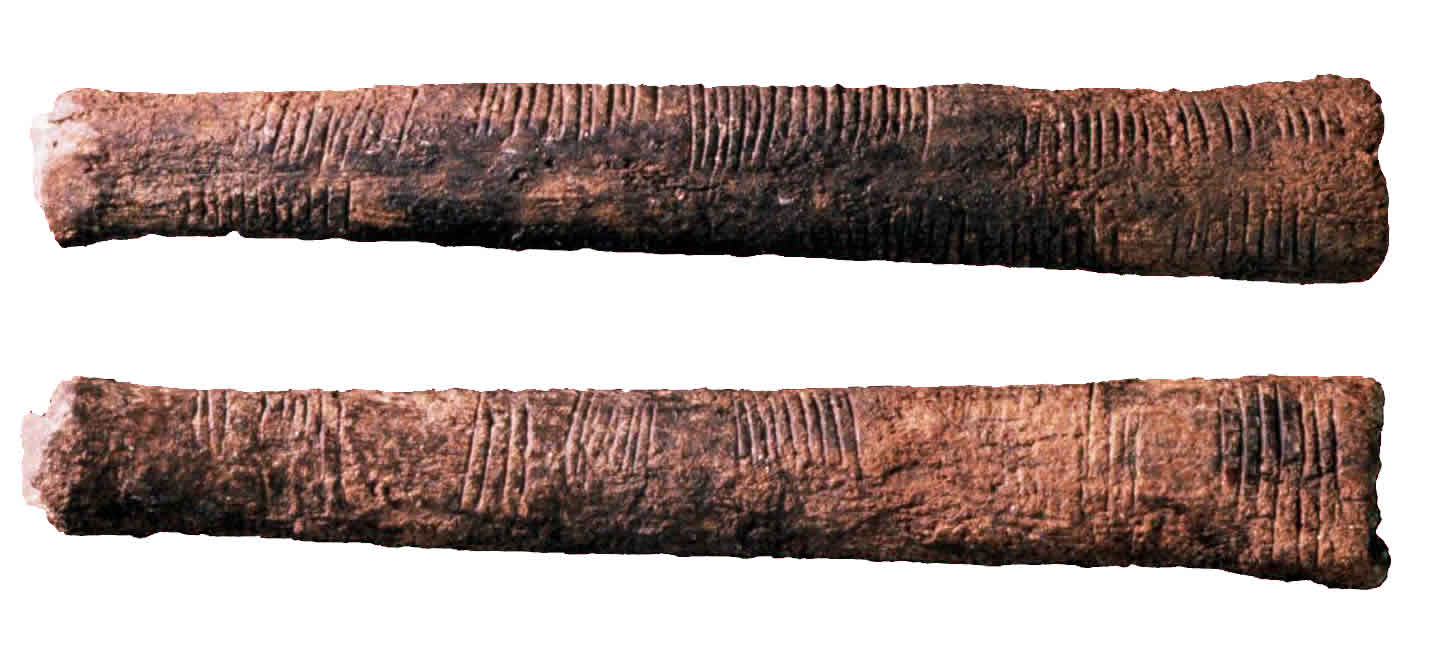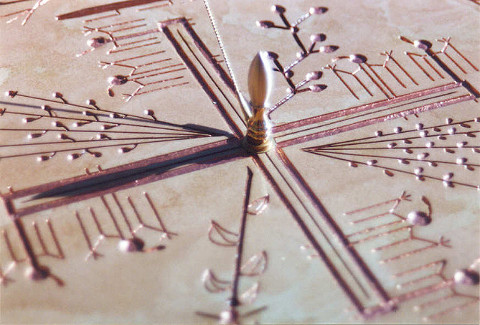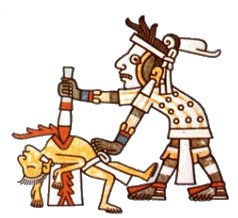It looks like you're using an Ad Blocker.
Please white-list or disable AboveTopSecret.com in your ad-blocking tool.
Thank you.
Some features of ATS will be disabled while you continue to use an ad-blocker.
8
share:
12,000 BC – Neolithic Revolution, the first agricultural revolution, begins in the ancient Near East
12,000 BC – was domesticated wheat at Pre-Pottery Neolithic A sites in the
Levant.
9,000 BC - Arrowheads, Scrapers, Grain grinders, Tools for spinning and weaving, and other Tools
8347 BC
=
12,000 BC – was domesticated wheat at Pre-Pottery Neolithic A sites in the
Levant.
9,000 BC - Arrowheads, Scrapers, Grain grinders, Tools for spinning and weaving, and other Tools
8347 BC
- According to Maya the first creation
numbers are invented
=
edit on 13-1-2016 by mikegrouchy because: format
8500 BC – Pre-Pottery Neolithic B sites across the Fertile Crescent growing wheat, barley, chickpeas, peas, beans, flax and
bitter vetch. Sheep and goat domesticated.
7000 BC – agriculture had reached southern Europe with evidence of emmer and einkorn wheat, barley, sheep, goats, and pigs suggest that a food producing economy is adopted in Greece and the Aegean.
7000 BC – Cultivation of wheat, sesame, barley, and eggplant in Mehrgarh (modern day Pakistan).
7000 BC – Domestication of cattle and chicken in Mehrgarh, modern day Pakistan.
6800 BC – Rice domesticated in southeast Asia.
6500 BC – Evidence of cattle domestication in Turkey. Some sources say this happened earlier in other parts of the world.
6001 BC – Archaeological evidence from various sites on the Iberian peninsula suggest the domestication of plants and animals.
6000 BC – Granary built in Mehrgarh for storage of excess food.
5500 BC – Céide Fields in Ireland are the oldest known field systems in the world, this landscape consists of extensive tracts of land enclosed by brick walls.
5200 BC - 'worlds oldest calendar' discovered in Scottish field
4000 BC – In Mehrgarh, the domestication of numerous crops, including peas, sesame seeds, dates, and cotton, as well as a wide range of domestic animals, including the Domestic Asian Water Buffalo, an animal that remains essential to intensive agricultural production throughout Asia today.
4000 BC – Egyptians discover how to make bread using yeast
4000 BC – Evidence for rice domestication in the Khorat Plateau area of northwestern Thailand.
4000 BC – First use of light wooden ploughs in Mesopotamia (Modern day Iraq)
3500 BC – Irrigation was being used in Mesopotamia (Modern day Iraq)
3500 BC – First agriculture in the Americas, around Central Amazonia or Ecuador
3147 BC
3140 BC
== =
7000 BC – agriculture had reached southern Europe with evidence of emmer and einkorn wheat, barley, sheep, goats, and pigs suggest that a food producing economy is adopted in Greece and the Aegean.
7000 BC – Cultivation of wheat, sesame, barley, and eggplant in Mehrgarh (modern day Pakistan).
7000 BC – Domestication of cattle and chicken in Mehrgarh, modern day Pakistan.
6800 BC – Rice domesticated in southeast Asia.
6500 BC – Evidence of cattle domestication in Turkey. Some sources say this happened earlier in other parts of the world.
6001 BC – Archaeological evidence from various sites on the Iberian peninsula suggest the domestication of plants and animals.
6000 BC – Granary built in Mehrgarh for storage of excess food.
5500 BC – Céide Fields in Ireland are the oldest known field systems in the world, this landscape consists of extensive tracts of land enclosed by brick walls.
5200 BC - 'worlds oldest calendar' discovered in Scottish field
4000 BC – In Mehrgarh, the domestication of numerous crops, including peas, sesame seeds, dates, and cotton, as well as a wide range of domestic animals, including the Domestic Asian Water Buffalo, an animal that remains essential to intensive agricultural production throughout Asia today.
4000 BC – Egyptians discover how to make bread using yeast
4000 BC – Evidence for rice domestication in the Khorat Plateau area of northwestern Thailand.
4000 BC – First use of light wooden ploughs in Mesopotamia (Modern day Iraq)
3500 BC – Irrigation was being used in Mesopotamia (Modern day Iraq)
3500 BC – First agriculture in the Americas, around Central Amazonia or Ecuador
3147 BC
- According to the Maya: Tzolkin 4-hau Haab 8-Cumku
"Was seen the image of the turtle"
Letters are invented
3140 BC
- According to the Maya: 13th Baktun completed
"Era of Gods" closed
world destroyed by man eating jaguars
Begin Second Creation
== =
edit on 13-1-2016 by mikegrouchy because: format
3000 BC – Turmeric, cardamom, pepper and mustard are harvested in the Indus Valley Civilization.
3000 BC – Fermentation of dough, grain, and fruit juices is in practice.
3000 BC – Sugar produced in India
2697 BC
2600 BC – Large-scale commercial timbering of cedars in Phoenicia (Lebanon) for export to Egypt and Sumeria. Similar commercial timbering in South India.
2350 BC
2349 BC
=== == =
3000 BC – Fermentation of dough, grain, and fruit juices is in practice.
3000 BC – Sugar produced in India
2697 BC
- Huang Ti: 12 animals years concurrent with 5 element years = 60 year cycle
Noah: counting the years, the months, and the days
2600 BC – Large-scale commercial timbering of cedars in Phoenicia (Lebanon) for export to Egypt and Sumeria. Similar commercial timbering in South India.
2350 BC
- Marduk: fixes first Calendar
- 12 months starting on the crescent moon
one intercalary month by decree
Tangdi Yao: fixes first Calendar
- 15 days a bean grows, 15 days a bean decays = 30 day month
Akkadian Pentecontad: fixes first Calendar
- 7x7 +1 = 50 days
x15 = 350 days
+15 or 16 = 365 or 366 days
2349 BC
- According to Maya: World destoyed by The Great Flood
"Dates are invented"
Begin Third Creation
=== == =
edit on 13-1-2016 by mikegrouchy because: format and grammar
2346 BC
2276 BC
1866 BC
1700 BC – Wind powered machine developed by Babylonians
1712 BC
1702 BC
1492 BC
1300 BC – Creation of canal linking the Nile delta to the Red Sea
1445-1000 BC
754 BC
691 BC – First aqueduct (approx. 50 miles long) constructed to bring water to Nineveh.
539 BC
530 BC – Tunnel of Eupalinos first underground aqueduct
500 BC – The moldboard iron plough is invented in China
500 BC – Row cultivation of crops using intensive hoeing to weed and conserve moisture practised in China
432 BC
389 BC March 3rd
300 BC – Efficient trace harness for plowing invented in China
200 BC – Efficient collar harness for plowing invented in China
100 BC – Rotary winnowing fan invented in China
100 BC – The multi-tube seed drill is invented in China
46 BC
38 BC January 1st
32 BC August 31
==== === == =
- According to Hebrew: The Flood
2276 BC
- Possible first Greek Games
Minoan: Year of 62 weeks of 1/5th of a month
- 1/5th of a month starting on first quarter moon
5.9 days x 62 = 365.8 days a year
1866 BC
- Sesotris III of 12th Dynasty: Sothic cycles
1,460 year cycle based on the star Sirius
every 1,461 years of 365 days, only 1,460 real years have passed
1700 BC – Wind powered machine developed by Babylonians
1712 BC
- Sodom and Gomorrah destroyed: rain of fire and brimstone
Maya: Destruction of world by rain of fire
Dead Sea: Massive bitumen explosion
1702 BC
- Old Babylonian Venus tablets begin
- Govenors Year: royal year, rising stars
Seasonal Year: 5 day week
Financial Calendar: Lunar year of 12 months +1 sometimes
Festable Calendar: Lunar year of 12 months +1 sometimes
1492 BC
- According to Maya: Haab
20 days x 18 months = 360 days
+5 evil days each year = 365
Long count: Katun = 20 years, Baktun = 400 Years
calendar is backdated to 3114 BC
1300 BC – Creation of canal linking the Nile delta to the Red Sea
1445-1000 BC
- Lunisolar calendar
leap months
7 year Jubilee
Gezer Calendar
754 BC
- Foundation of City of Rome
15 year indiction: Roman tax cycle
691 BC – First aqueduct (approx. 50 miles long) constructed to bring water to Nineveh.
539 BC
- Persian Empire
1 yz (yazdegirdi) = 12 months of 30 days
first quarter moon called "Her" and all-healing
530 BC – Tunnel of Eupalinos first underground aqueduct
500 BC – The moldboard iron plough is invented in China
500 BC – Row cultivation of crops using intensive hoeing to weed and conserve moisture practised in China
432 BC
- Meton of Athens: Metonic Cycle
19 solar years = 235 solar months
389 BC March 3rd
- Birth of Zoroaster
2 weeks of 7 days followed by 2 weeks of 8 days = 30 day month
300 BC – Efficient trace harness for plowing invented in China
200 BC – Efficient collar harness for plowing invented in China
100 BC – Rotary winnowing fan invented in China
100 BC – The multi-tube seed drill is invented in China
46 BC
- Julian Calendar introduced
backdated to the founding of rome
709 AUC
38 BC January 1st
- Year one of the Spanish era of Pax Romana
Coligny Calendar grid: public peg calendar
62 months over 5 years
32 BC August 31
- Jesus crucifiction eclipse
9am local Jerusalem time
sunrise local Olmec time
- Maya: world destroyed by wind
men turned into monkeys clinging to trees to survive
Odin hangs from the tree of life for 9 days to learn runes
Begin fourth Creation
==== === == =
edit on 13-1-2016 by mikegrouchy because: format
200 AD – The fishing reel invented in China
277 AD Bishop Anatolius of Laodicea: 19 year easter tables
312 AD Ascension of Emperor Constantine
325 AD First Council of Nicaea: calls for standardized calendar
390 AD Theophilus of Alexandria: 95 year easter tables
427 AD
525 AD
600 – The distillation of alcohol in China
607 – The Chinese begin constructing a massive canal system to connect the Yellow and Yangtze rivers
622 AD September 20th
763 AD June 29
277 AD Bishop Anatolius of Laodicea: 19 year easter tables
312 AD Ascension of Emperor Constantine
325 AD First Council of Nicaea: calls for standardized calendar
390 AD Theophilus of Alexandria: 95 year easter tables
427 AD
- Brahaspaticakra:
60 earth years = 5 Jupiter years
backdated to 3102 BC February 2nd
525 AD
- Dionysius Exiguus: established Christian era dating system
backdated to the incarnation of Jesus
and based on the 95 year easter tables
published 525 anno domini
600 – The distillation of alcohol in China
607 – The Chinese begin constructing a massive canal system to connect the Yellow and Yangtze rivers
622 AD September 20th
- Era of the HIraj
763 AD June 29
- Copan Eclipse
9 . 16 . 12 . 5 . 17
6-Caban 10-Mol
edit on 13-1-2016 by mikegrouchy because: format
edit on 13-1-2016 by mikegrouchy because: (no reason given)
Without the calendar planting in sunny February is a mistake everyone would make over the course of a lifetime.
The Holidays seem to match up better with the year shifted around two or three months. That would put Christmas, the holiday of giving, right at the end of winter when food is scarce. Then Valentine's Day would be in the first warm weather, when every one who made it through the winter is feeling pretty good.
The Holidays seem to match up better with the year shifted around two or three months. That would put Christmas, the holiday of giving, right at the end of winter when food is scarce. Then Valentine's Day would be in the first warm weather, when every one who made it through the winter is feeling pretty good.
Here I am caught by surprise. I had not anticipated playing the gracious host. In this thread. Like so many historical statements the dates posited
above are contentious. It is the result to doing an analysis of the history of calendar techniques to see if some semblance of actual human history
could be defined. As obviously more sophisticated/accurate calendar systems post-date the primitive ones.
But I was surprised to find that each time a new calendar system was introduced their was usually some great change in civilization a well. An upheaval.

Thank you so much for contributing.
Mike Grouchy
But I was surprised to find that each time a new calendar system was introduced their was usually some great change in civilization a well. An upheaval.

Thank you so much for contributing.
Mike Grouchy
This album has a similar scope to the subject of calendars
On the second side are the lyrics
The poet and the wise man stand behind the gun
and signal for the crack of dawn "Light the Sun"
Do you believe in the Day? (Dei)
In early civilizations the ruling class needed the calendar so as to coordinate rituals with astronomic events, so the rulers could take credit for the skies.
On the second side are the lyrics
The poet and the wise man stand behind the gun
and signal for the crack of dawn "Light the Sun"
Do you believe in the Day? (Dei)
In early civilizations the ruling class needed the calendar so as to coordinate rituals with astronomic events, so the rulers could take credit for the skies.
edit on 13-1-2016 by Semicollegiate because: (no reason given)
a reply to: mikegrouchy
A calendar is technology. Technology is what typically makes one civilization "greater" than another. At least, in the eyes of history (which was written by the greater technology more often than not).
It is unsurprising that upheavals create new calendars. It is entirely possible that, being resistant to change, the "new" system developed while under the older system during each iteration of improvement.
Still...some interesting lines to run down. Not well read enough to argue with you.
ETA: regarding the bitumen explosion....this is a pretty interesting read that applies some historical context to biblical stories relating to aforementioned bitumen explosion:
www.totheends.com...
A calendar is technology. Technology is what typically makes one civilization "greater" than another. At least, in the eyes of history (which was written by the greater technology more often than not).
It is unsurprising that upheavals create new calendars. It is entirely possible that, being resistant to change, the "new" system developed while under the older system during each iteration of improvement.
Still...some interesting lines to run down. Not well read enough to argue with you.
ETA: regarding the bitumen explosion....this is a pretty interesting read that applies some historical context to biblical stories relating to aforementioned bitumen explosion:
www.totheends.com...
edit on 1/13/2016 by bigfatfurrytexan because: (no reason given)
I have reason to think that both the first keepers of time and agriculture were discovered by females, according to some sources female's monthly
cycles is connected to the lunar calendar and it was the females who first took note of this,
We have evidence that this was so among the Maya
Now as to agriculture a favorite theory of mine goes like this, as men were primarily the hunters and females the gathers, supplementing the meat diet ,seedling and such would appear near the living space, from there it was only a matter of time before they started planting them on purpose, for to this day females are the primary keepers of small gardens, I also have another hunch that on a physiological level females tend to be better shoppers than males, a female will typically go from store to store gathering stuffs, a male who want a pair of shoes go right to the shoe watering hole and capture it.
This is as far as I will go playing at physiologist.
Holy Hormones Honey! Lunar cycles and menstruation. The two have been correlated for thousands of years. Women who understood the significance of these two cycles were revered for their intuitive knowledge. Many believe that women were for the first mathematicians, healers, agriculturists because of their innate understanding of cycles. The post below also discusses the lunar fertility phase.
holyhormones.com...
We have evidence that this was so among the Maya
What then is the duration of the true feminine cycle? Why did the ancient Maya follow a moon cycle averaging 29.5 days rather than 28? A full moon cycle is 29.53 days and in ancient mythologies the full moon is almost invariably associated with a female goddess. Among the Maya this goddess was called Ixchel and in Babylon she was called Ishtar, who was said always to menstruate on a full moon. This raises the question of why, if ancient mythologies associate the female cycles of ovulation and menstruation with the full moon cycle of 29.5 days, why do modern doctors often say that it is 28 days? Medical and biological textbooks will mostly state that the female cycles typically have durations of 28 days, with a range of variation between 21 and 35 days. In practice there is however often a considerable variation between different women and also over the life-time of an individual woman. Yet, we may still ask what is the duration of the natural female cycles and what determines their duration. Most animals have estrus cycles of a very different length and so, why would the human female be special in having a cycle paralleling that of the full moon?
calleman.com...
Now as to agriculture a favorite theory of mine goes like this, as men were primarily the hunters and females the gathers, supplementing the meat diet ,seedling and such would appear near the living space, from there it was only a matter of time before they started planting them on purpose, for to this day females are the primary keepers of small gardens, I also have another hunch that on a physiological level females tend to be better shoppers than males, a female will typically go from store to store gathering stuffs, a male who want a pair of shoes go right to the shoe watering hole and capture it.
This is as far as I will go playing at physiologist.
edit on 14-1-2016 by Spider879 because: (no reason given)
Not sure I get the purpose of this thread...
Seems like a lot of writing to state the obvious...
Of course Calendars are tied to agriculture - it's why they were invented - to track the passage of time in order to know when the best time to plant/harvest was.
Seems like a lot of writing to state the obvious...
Of course Calendars are tied to agriculture - it's why they were invented - to track the passage of time in order to know when the best time to plant/harvest was.
a reply to: Semicollegiate
The holidays match up just fine now.
Christmas is pretty much on the Winter solstice - a few days out - but it was originally placed there to match up with the Roman holiday so they would be more amiable to adopting Christianity.
Easter is the same - tied to the Spring equinox (the first Sunday following the first full Moon after the equinox) indicating that Spring has begun.
Valentines day, though, is non starter - it's not a holiday in the slightest and only really developed it's current meaning in the past few hundred years. It has nothing to do with "being happy to survive Winter"
The holidays match up just fine now.
Christmas is pretty much on the Winter solstice - a few days out - but it was originally placed there to match up with the Roman holiday so they would be more amiable to adopting Christianity.
Easter is the same - tied to the Spring equinox (the first Sunday following the first full Moon after the equinox) indicating that Spring has begun.
Valentines day, though, is non starter - it's not a holiday in the slightest and only really developed it's current meaning in the past few hundred years. It has nothing to do with "being happy to survive Winter"
originally posted by: stumason
Not sure I get the purpose of this thread...
Seems like a lot of writing to state the obvious...
Of course Calendars are tied to agriculture - it's why they were invented - to track the passage of time in order to know when the best time to plant/harvest was.
obvious to many or most but not to all plus I kinda like the time lines given for many areas of the world and their civilization's use of time, in future threads the above can come in handy as a reference.
My thesis is that each instance of an improved calendar has been followed by upheaval. I invite critique. For instance the
Flood date is followed by three "fixed the calendar" rulers in three different lands. But I submit to the reader that one does not just
get-off-the-boat and invent a new calendar. The education level must pre-exist, be in situ, already be in evidence, etcetera. Even though, as yet, I
have found no other evidence than the general trend of math getting better and new empires/kingdoms emerging.
Mike Grouchy

Mike Grouchy

edit on 14-1-2016 by mikegrouchy because: format
originally posted by: Spider879
I have reason to think that both the first keepers of time and agriculture were discovered by females, according to some sources female's monthly cycles is connected to the lunar calendar and it was the females who first took note of this,
If I may. All true but incomplete. There is a difference between a woman counting the days for herself, or keeping a record in common with another person, using the same number. This is how hash marks, and graphia start to develop. One scenario she is continually disappointed that he keeps loosing track of the days (no school back then) and has him start notching a bone every sunrise. Then grades his bone when he returns. No pun intended.

World's first calender?? created by women??..The Ishango Bone, 20,000yrs BC
Inventions happen between people. Nothing has ever been invented that wasn't invented for someone, or some idea. The way current historical anthropology interprets the feminine invention of calendars is only half of the story. Unless they intend us to assume the lunar calendar was invented as a dialog between a woman and her blood. Just sounds a bit lonely to me is all.
Mike Grouchy
edit on 14-1-2016 by mikegrouchy because: format
edit on 14-1-2016 by mikegrouchy because: (no reason
given)
I did find this interesting quote
from ancient Egyptian myth during my research.
Mike

from ancient Egyptian myth during my research.
Before all things was Time, then Desire (Motive), then Darkness
Mike

originally posted by: mikegrouchy
I did find this interesting quote
from ancient Egyptian myth during my research.
Before all things was Time, then Desire (Motive), then Darkness
Mike
So for them time was always thus.but what is the graphic clock like device.
originally posted by: Spider879
So for them time was always thus.but what is the graphic clock like device.
The pegboard gnomon is what I would consider the first calculator. The oldest one we have evidence of is the Coligny calendar. Being detachable makes it secure against anyone else checking the heavens. To me it symbolizes the emergence of a priesthood.
Mike Grouchy
new topics
-
Turns out, they planned to go after P-nut.
US Political Madness: 38 minutes ago -
Sick sick sick
Social Issues and Civil Unrest: 6 hours ago -
Comcast dumping MSNBC
Mainstream News: 9 hours ago
top topics
-
Comcast dumping MSNBC
Mainstream News: 9 hours ago, 15 flags -
President-elect TRUMP Picks MATT GAETZ for his ATTORNEY GENERAL - High Level PANIC Ensues.
2024 Elections: 12 hours ago, 13 flags -
Mike Tyson returns 11-15-24
World Sports: 17 hours ago, 5 flags -
Turns out, they planned to go after P-nut.
US Political Madness: 38 minutes ago, 5 flags -
Sick sick sick
Social Issues and Civil Unrest: 6 hours ago, 4 flags
active topics
-
Sick sick sick
Social Issues and Civil Unrest • 23 • : Irishhaf -
President-Elect Donald Trump will Meet with Coup-Victim JOE BIDEN on Wed 11.13.2024.
2024 Elections • 34 • : Irishhaf -
The Acronym Game .. Pt.4
General Chit Chat • 944 • : tinkerbell99 -
Turns out, they planned to go after P-nut.
US Political Madness • 3 • : nugget1 -
WATCH LIVE: US Congress hearing on UFOs, unidentified anomalous phenomena
Aliens and UFOs • 37 • : putnam6 -
Alex Jones Reinstated on X
Education and Media • 80 • : starvosan -
How can you defend yourself when the police will not tell you what you did?
Posse Comitatus • 74 • : network dude -
President-elect TRUMP Picks MATT GAETZ for his ATTORNEY GENERAL - High Level PANIC Ensues.
2024 Elections • 43 • : network dude -
HHS Spent Hundreds of Millions of Dollars on DEI Initiatives Under Biden, Watchdog Finds
US Political Madness • 6 • : marg6043 -
My aunt kidnapped my father.
Rant • 17 • : BrotherKinsMan
8

